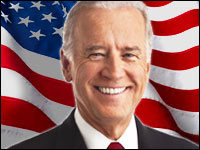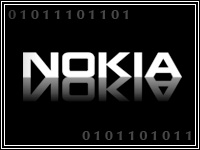
Those following the progress of U.S. broadband initiatives were going to need a bandwidth boost of their own Thursday; there was a lot of new data to digest.
Dual announcements captured the attention of industry officials and consumer advocates: Vice President Joe Biden announced the initial list of 18 projects to receive federal broadband stimulus funds, while Washington was still buzzing over the late Wednesday release of Federal Communications Commission proposals for bringing more U.S. homes under the high-speed Internet access umbrella.
All of this points to a new direction for American broadband policy, one that government officials hope will fill in the infrastructure gaps in rural areas while also generating new jobs in an employment-starved nation. However, consumer groups said the FCC’s plans represented small steps, not giant leaps in access.
One Company’s Good Day
Consolidated Electric Cooperative submitted a proposal for a US$3.7 million plan to lay down 166 miles worth of fiber-optic lines for a rural portion of north-central Ohio. “We’re bouncing off the ceiling. We’re excited,” Chief Information Officer Doug Payauys told the E-Commerce Times when asked for his reaction to winning a federal loan-grant. “We knew we had a strong project, and we’re extremely excited that it fits so well in the community.”
The co-op’s service area could serve as an example of what the federal government hopes to achieve with its stimulus plan. It’s considered to be 79 percent under-served by broadband. “This is no different from where we were with electricity in the 1930s,” Payauys said, referring to the time in the nation’s history that gave rise to the idea of co-ops as a way to bring power to rural communities of America. “This is an opportunity for Consolidated Electric to now take the high-speed infrastructure and pull that out into those rural areas, so that they’ll be able to benefit from quality of life.”
However, a big part of the co-op’s proposal involves linking electric generation substations in a smart grid, a tech trend that’s been mentioned by President Obama as a way to more efficiently manage power. “The fiber network will complement that smart grid and make it more valuable,” Payauys said. “We’ll be able to pull data faster from those substations and provide members and power generation companies with better real-time information.”
The proposal is one of several “middle mile” projects that were part of the $182 million in grants and loans handed out Thursday by the government. That money also targets “last-mile” plans to connect homes and businesses to high-speed Internet, and also includes funds for computing initiatives at educational institutions and public facilities and an education campaign about broadband. However, the middle-mile projects can have the greatest benefits, especially in trickle-down employment possibilities, Payauys said.
“It’s designed to bring points of presence and Internet connections to several areas within those counties, and then other providers can springboad off of that. There are a number of ways it can help lower infrastructure costs by having a lower-cost (access) backbone.”
The FCC’s Missed Opportunity?
Among the first round of broadband stimulus funding winners, these middle-mile projects caught special praise from Derek Turner, research director for consumer advocate group Free Press.
“They are a great way to maximize public investment, because it’s not just one end-user network,” Turner told the E-Commerce Times. “It’s going to be used by many different ISPs, many different anchor institutions [like schools and hospitals] and it’s really a piece of the puzzle that’s not often given a lot of focus. So kudos to them.”
In his comments regarding the first glimpse at the FCC’s national broadband plan, mandated by the same legislation that created the stimulus funding, Turner was not so effusive. The plan includes a proposal for taking Universal Service Fund money to help build out more rural networks and help subsidize high-speed access for low-income residents. It would also free up more spectrum for mobile wireless broadband and create more competition in the set-top box market by encouraging manufacturers to make the boxes compatible with video and online services.
However, Turner said the real competitive issues lie with the big cable and phone companies that are now the major broadband players in the country. “They haven’t even admitted they have a competition problem. Congress wanted them to do something aspirational, and almost everything announced had previously been announced or was already on the table. There just weren’t a lot of visionary ideas outlined.
“As consumer advocates, we’re fundamentally bothered by the fact that [the FCC’s] national broadband team is not proactively facing problems caused by the broadband duopoly and not willing to face those challenges,” Turner said.













































Social Media
See all Social Media